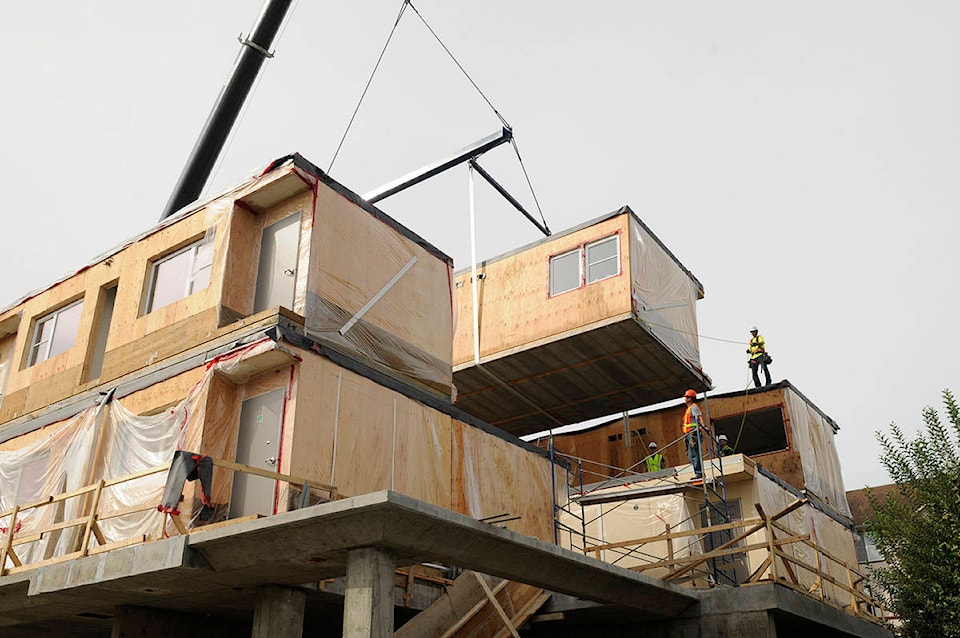As British Columbians struggle to find housing, new figures show the first 10 communities tasked with creating more of it are having mixed success meeting their targets.
Victoria has already exceeded its annual goal, but other communities — both and large and small — are off the pace.
Under the 2023 Housing Supply Act, the provincial government charged these 10 communites with creating 9,522 units on top of what would have created naturally based on historic projections.
Figures released Wednesday (June 26) show that in the first six months, just over 4,000 new units have been built.
"People in B.C. are seeing more homes being built in their communities as municipalities progress toward achieving their housing targets," B.C. Housing Minister Ravi Kahlon said in a statement. "We are, as a province, starting to see progress with record levels of housing starts in 2023 and we are on pace to meet or exceed that level in 2024. We will continue to collaborate meaningfully with municipalities to encourage faster creation of homes, so people can stay in the communities they love."
Overall, the 10 are charged with creating just over 60,000 new housing units during a five-year period, or roughly 12,000 per year.
Victoria has been most prodigious. It exceeded its annual target of 659 units by 14 per cent within six months. Port Moody ranks second, having met 90 per cent of its quota, followed by District of North Vancouver with 78 per cent. Kamloops — the only Interior community among the first 10 — has met 45 per cent of its quota. Saanich, the largest municipality on Vancouver Island, has so far reached 44 per cent.
Abbotsford, the largest community in the Fraser Valley, has reached 39 per cent. Vancouver, B.C.'s largest municipality, has reached 31 per cent. Delta (22 per cent), the District of New Westminster (18 per cent) and the Victoria suburb of Oak Bay (12.5 per cent) round out the bottom three. In the case of Oak Bay, this figure means it has created seven additional units.
A government release singles out the bottom three communities in warning of tougher measures ahead.
"These municipalities are encouraged to expedite their processes and comply with the new requirements to ensure that housing is being built where it's needed," it reads. "Compliance measures may be taken if satisfactory progress is not made by the time annual progress reports are made, to ensure that municipalities are taking action to build homes for people as quickly as possible."
Municipal officials have promised to improve policies to spur development, but others continue to be critical of their inclusion in what some have called a 'naughty list' — a term provincial officials have rejected.
The ministry later described in detail when and how compliance measures might kick in. "If satisfactory progress has not been demonstrated, actions can be taken by appointing an advisor, issuing a directive to update a bylaw or issue a permit, or an order in council," it said in a statement. "The appointment of an advisor will examine the reasons why a housing target was not met."
The ministry added that it will consider any use of compliance measures it has fully evaluated annual progress reports. Overall, the ministry tried to strike a collaborative tone, while also reminding municipalities to do their part. "While good progress has been shown in many communities, there were some communities that are not making as much progress as expected," it reads. "(B.C.) will continue to work in collaboration with those municipalities to achieve their goals."
Government also released the framework for 10 of the 20 additional communities poised to be held to housing targets.
Surrey leads this list with having to create 27,256 units, followed by Kelowna with 8,774 units. Other notable entries on this list include Nanaimo (4,703 units), Chilliwack (4,594 units) and Maple Ridge (3,954 units). The ministry said it will release the targets for the remaining 10 later this summer.
Overall, the 20 new communities are tasked with creating 55,478 new housing on top of what would have been built based on historical trends.

